Ahrefs
Ahrefs shows the previous lost traffic levels and the rapid regain after working with Logeix, keyword rankings are also much more than before too
TheSoapery is a natural ingredients store for making soap at home. Their no-nonsense approach is loved by many with over 100,000 online sales.
Organic traffic had dropped by ~65% in the past year, the goal was to recapture this using sustainable strategies.
Naissance 😊
Freshskin 😒
The Soap Kitchen 😬

Impressions
Clicks
Collection Clicks
Annual Traffic Value
Top 3 Keywords
Page 1 Keywords
No two projects are the same, but the high level strategy never changes. Here are the 3 steps we use every time to multiply our clients organic revenue, along with the specific tactics we used for this client campaign.
TheSoapery had a few technical SEO issues, but nothing particularly crazy, just the typical Shopify problems.
Every collection had a big list of filters (i.e. product tags) that were all low quality automated pages - and indexable.
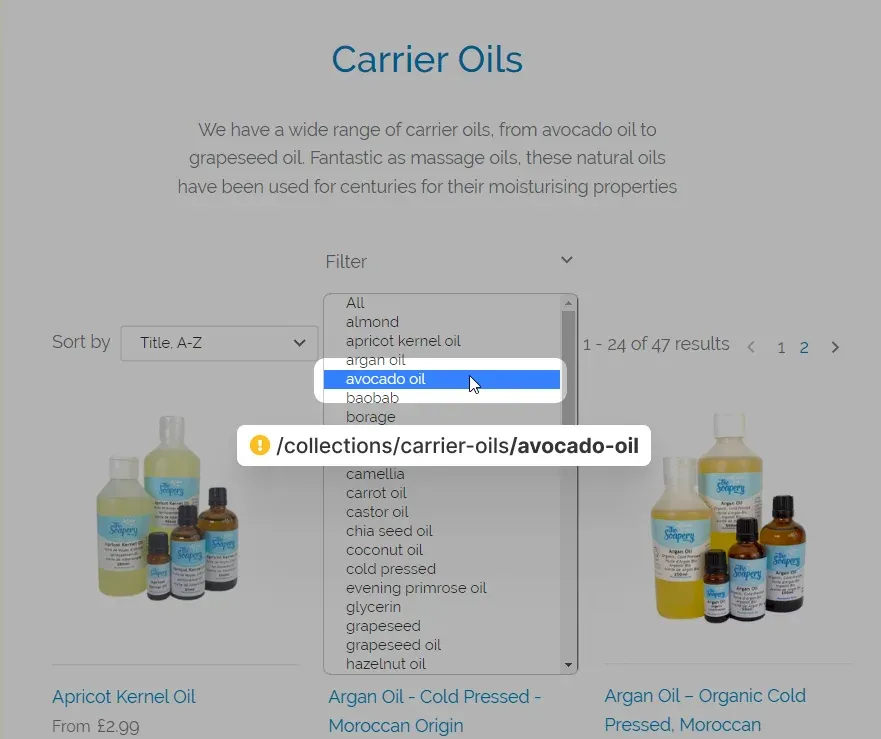
These are all simple enough to block in Robots.txt.
They also had all the product links going to canonicalised (i.e. wrong) URLs:

Which was a simple theme fix, along with adding custom breadcrumbs which breaks as a result of this:
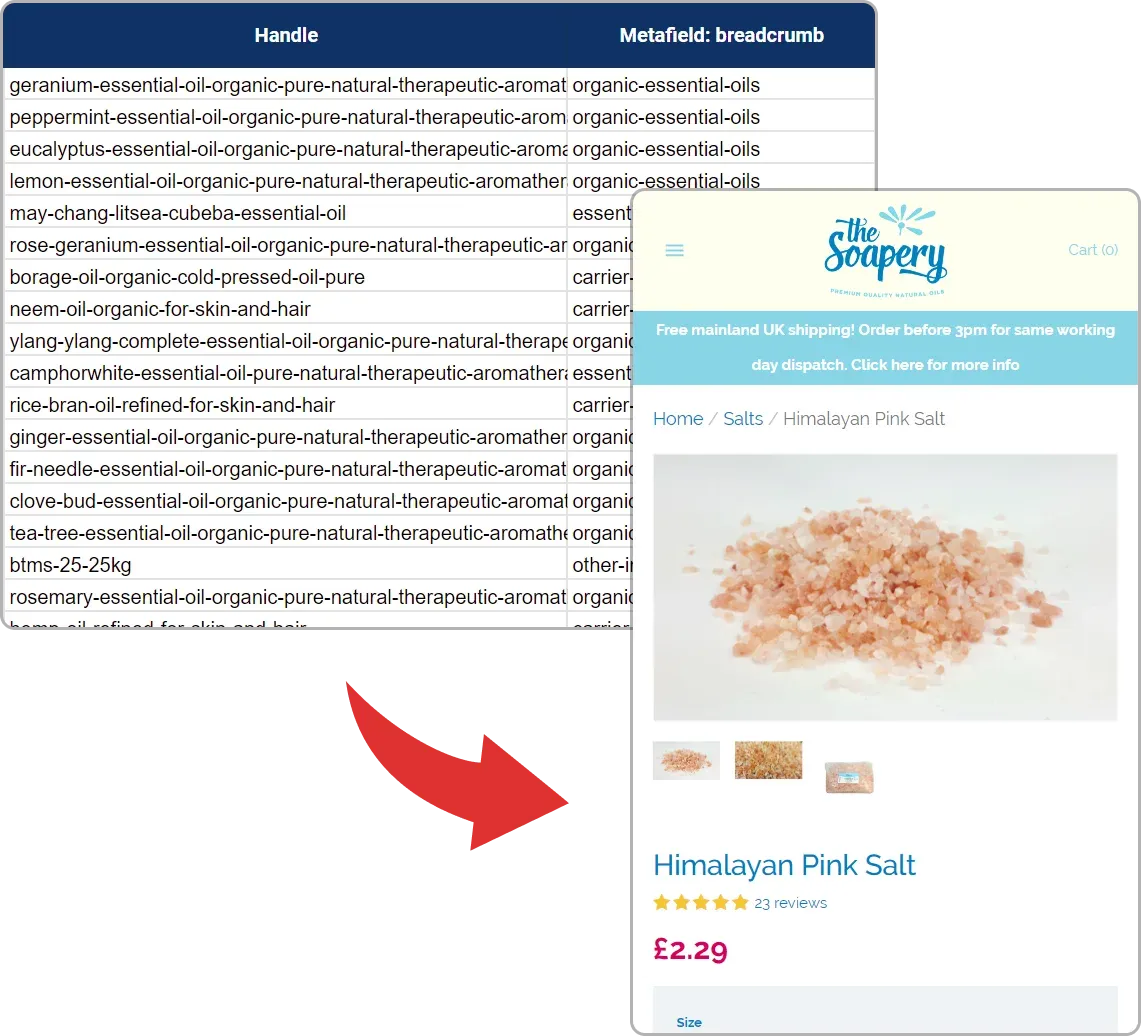
This is huge for internal linking, which can really help rankings, as you’ll now have links to your collections from all your products.
Another less common issue was a lack of Hreflang tags. TheSoapery also has an EU and FR website for selling across Europe, even with duplicate English content.
So we manually set up Hreflang tags to show search engines these are all the same business and website, just different language and location targets.
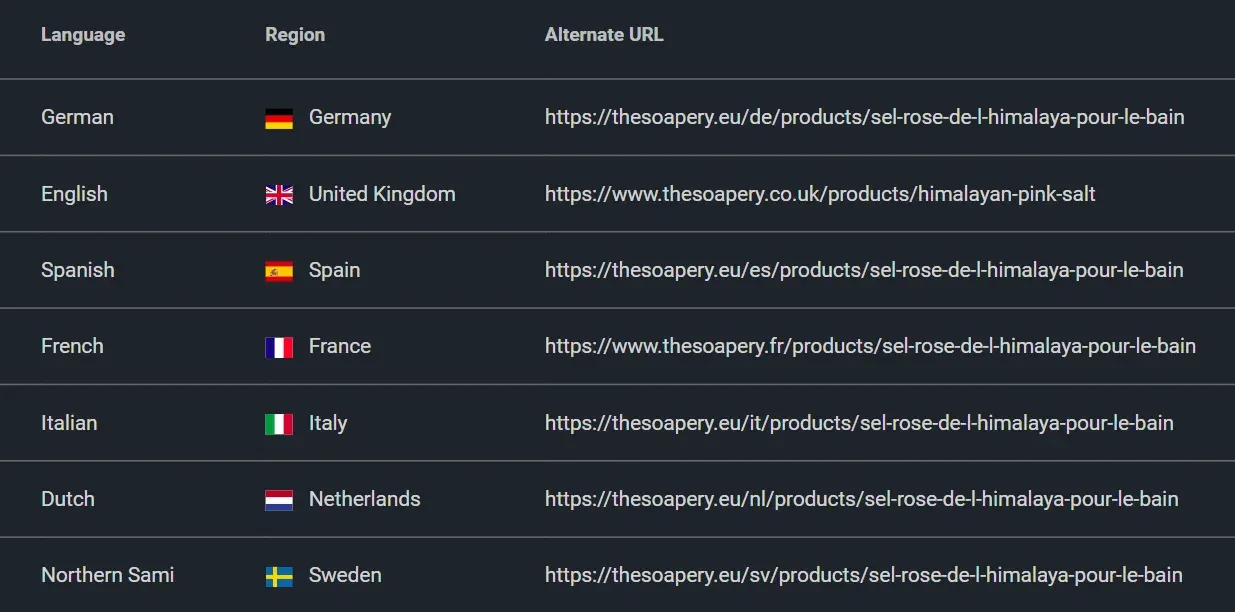
Technically, this is extremely simple to implement. But as there’s no real link or connection between separate Shopify stores, it required a lot of manual research and setup.
If you take a look at The Soap Kitchen, you’ll notice they have a huge number of product categories accessible via different shop by menus:
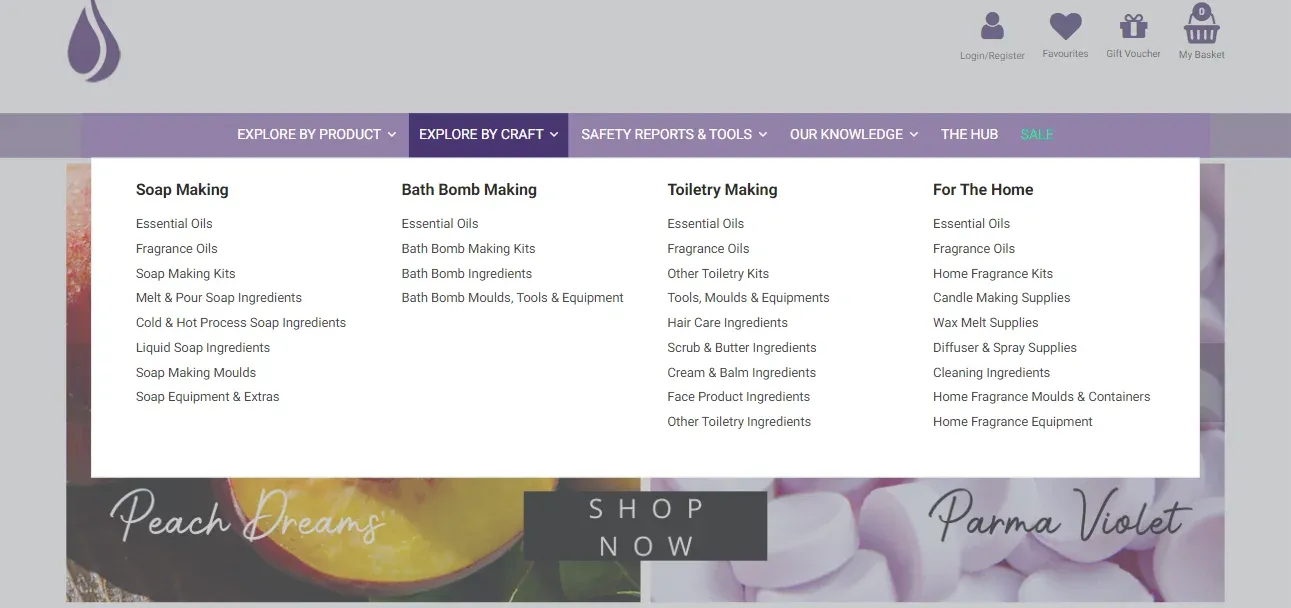
This expands the keyword potential of the site quite dramatically, with each of these being potential search entry points for customers.
TheSoapery on the other hand had just 11 collections.
So far we’ve launched 2 new collections:
The rest of our ideas are still pending as the client redesigns the website and navigation. Initial results are extremely promising though.
Our final core strategy was to improve the existing homepage, collections, and product pages.
The first major problem was that the theme layout restricted us from adding any content to the pages:
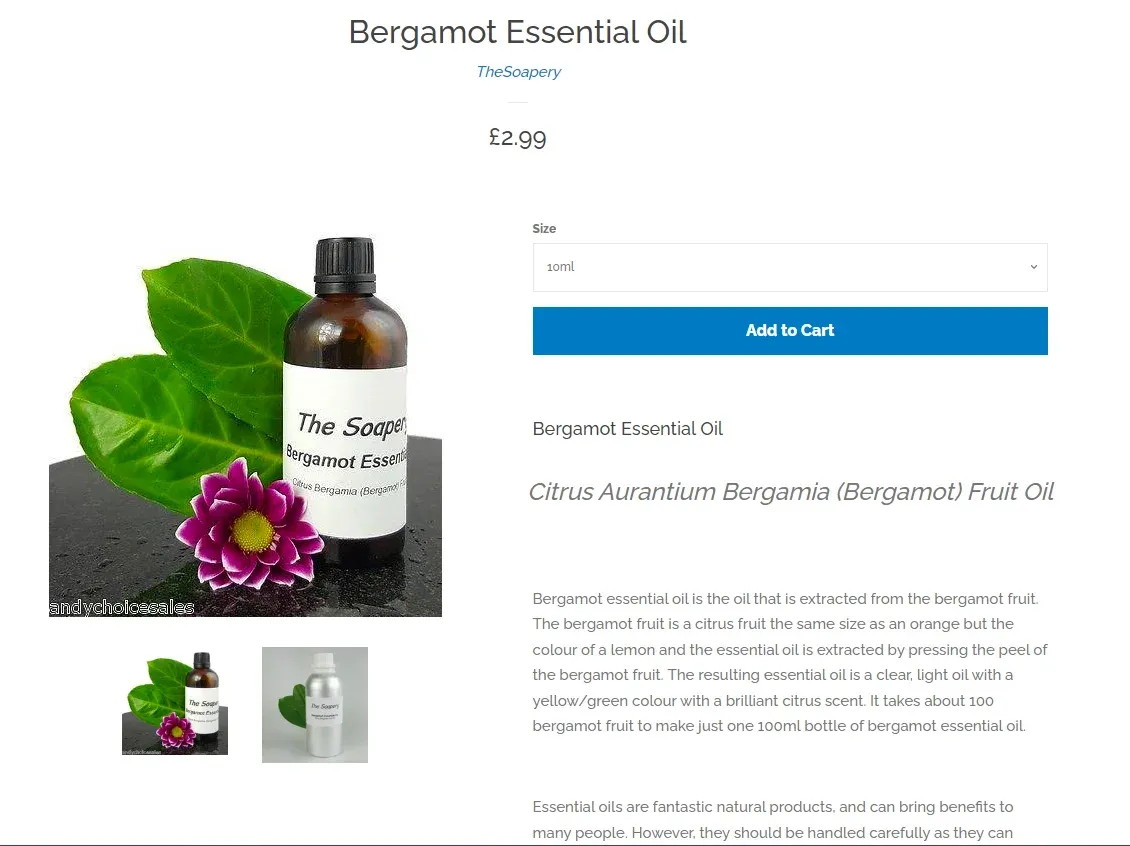
We resolved this by moving the description below the image and purchase area, which also allowed us to switch it to a full width layout.
You can see an example here:
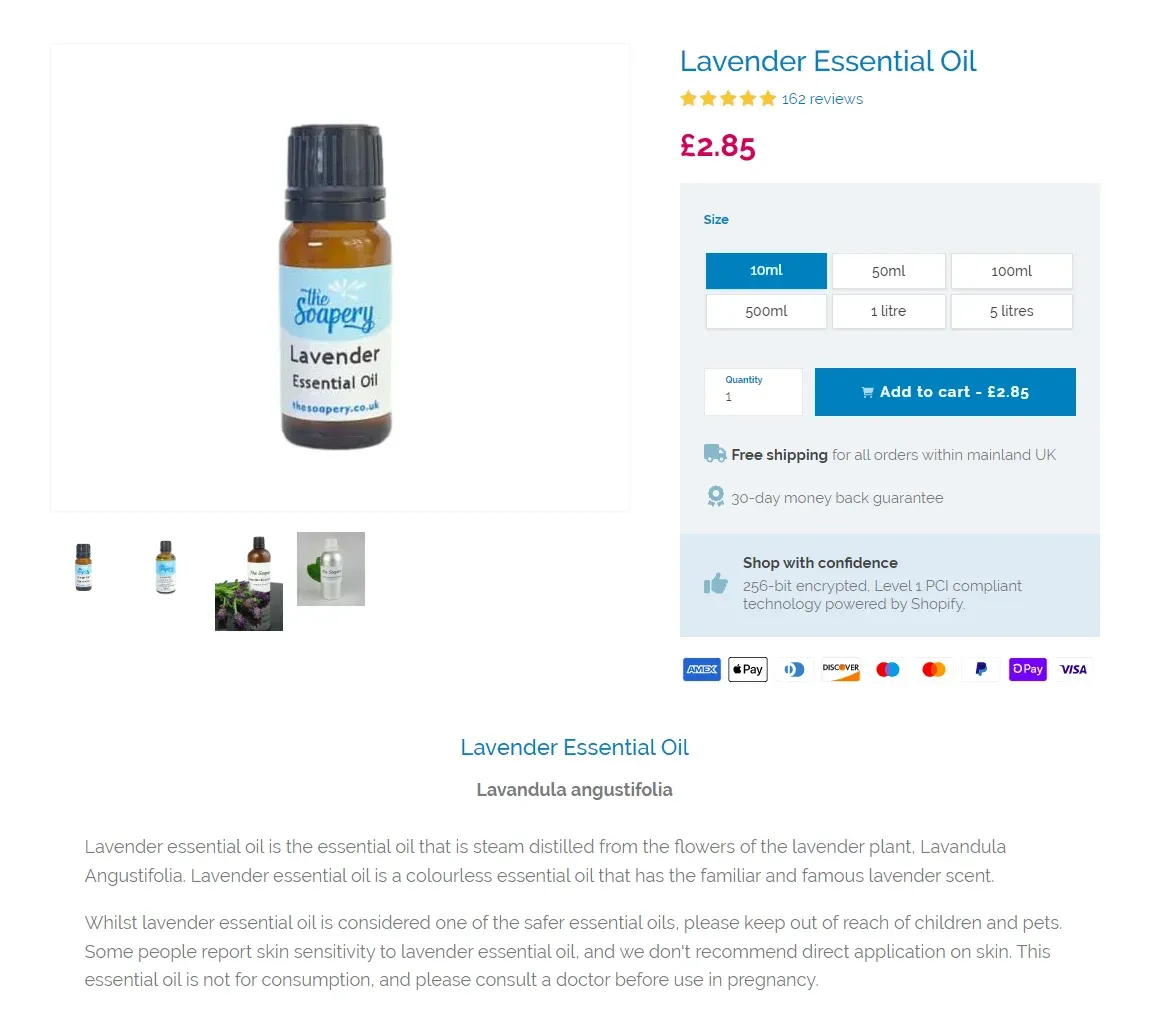
Now we could add more detailed descriptions, answer potential buyer questions, etc.
Similarly, we customised collections so they can keep short persuasive descriptions at the top, with more detailed FAQ sections or other descriptions at the bottom.

By adding more relevant content, we were able to optimise the pages properly, which led to significant search ranking improvements.
The other issue we had was the similarity of products, take a look at this:
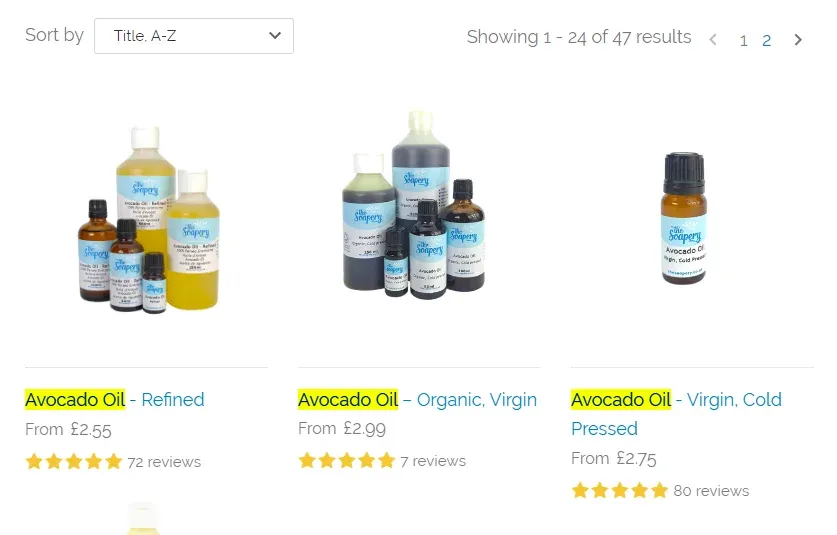
All of these products are extremely similar and all are able to rank for avocado oil keywords.
But which one should rank? Well, sometimes it was one, other times it was another. This led to very inconsistent results over time.
We resolved this by deciding a primary product for each type, for example, we’ll say “Avocado Oil - Refined” is our main focus to rank for avocado oil.
So we optimised this specific page for that keyword, de-optimising the rest.
Then we created links from the other products to this specific one, this helps establish a clear hierarchy of importance and relevance.
Finally, we optimised the other products for specific keywords such as “cold pressed avocado oil” or “organic avocado oil”.
Repeat this across all the other products, it’s a lot of manual work, but the results paid off massively if you were to compare product rankings.

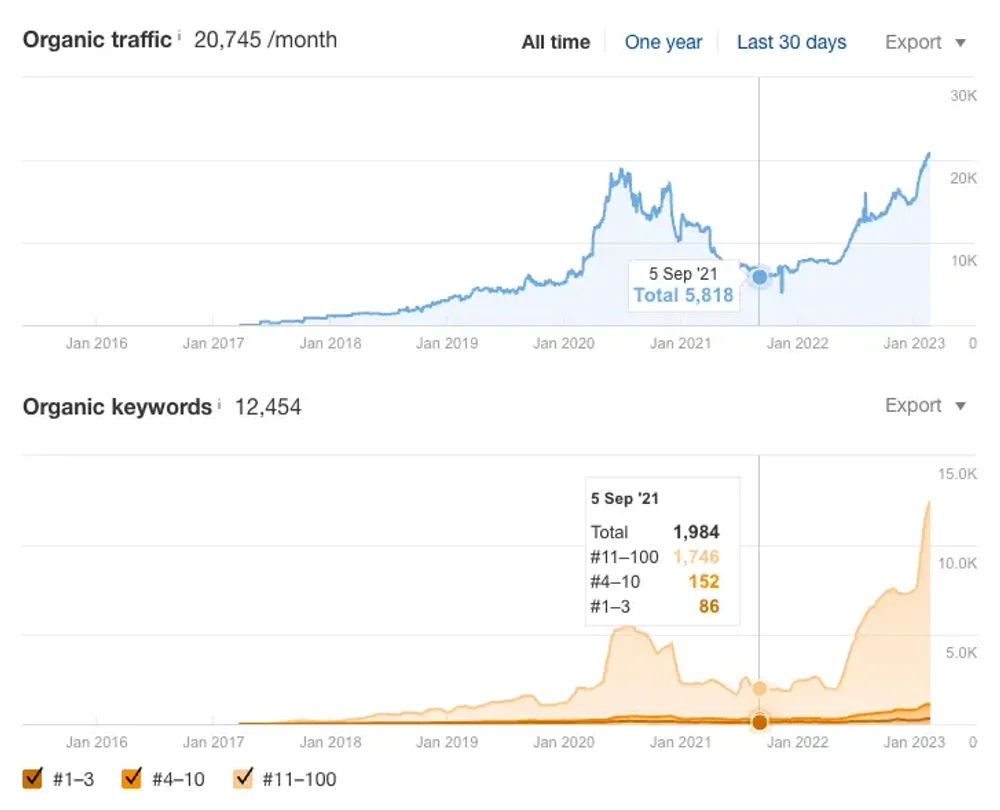
Ahrefs shows the previous lost traffic levels and the rapid regain after working with Logeix, keyword rankings are also much more than before too
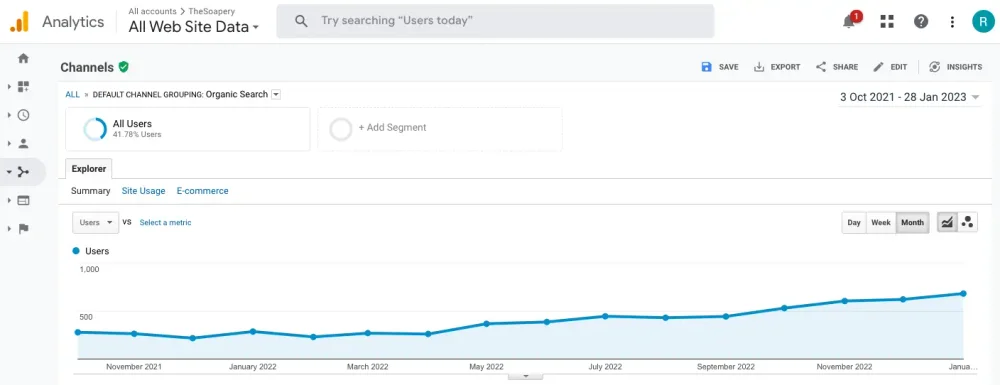
This shows the blog traffic growth since the campaign start to show the impact of our middle of funnel content
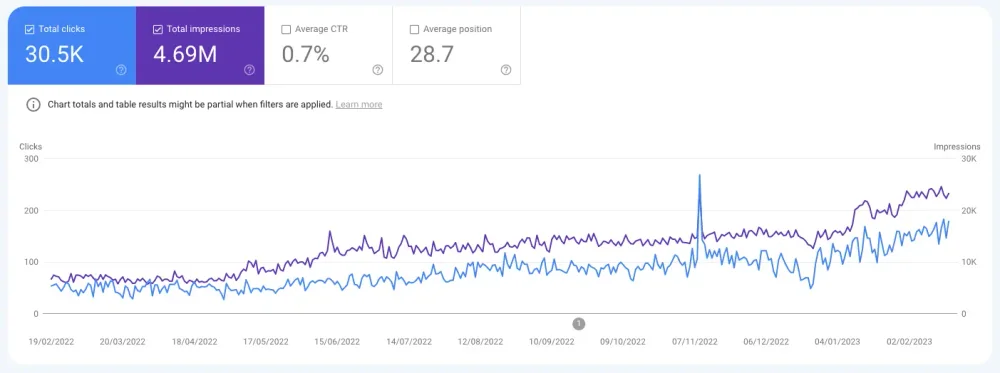
GSC shows the over doubling of clicks when excluding brand searches to show true value of our campaign
TheSoapery now has the highest traffic value out of all their competitors with $118,800 per year of equivalent PPC cost.
Only one competitor has greater search traffic, The Soap Kitchen, with approximately +15%. Though, that's coming from 522% more referring domains.
Despite the lower domain authority and a small link building budget, we've been able to grow TheSoapery into the highest traffic value store in their niche.